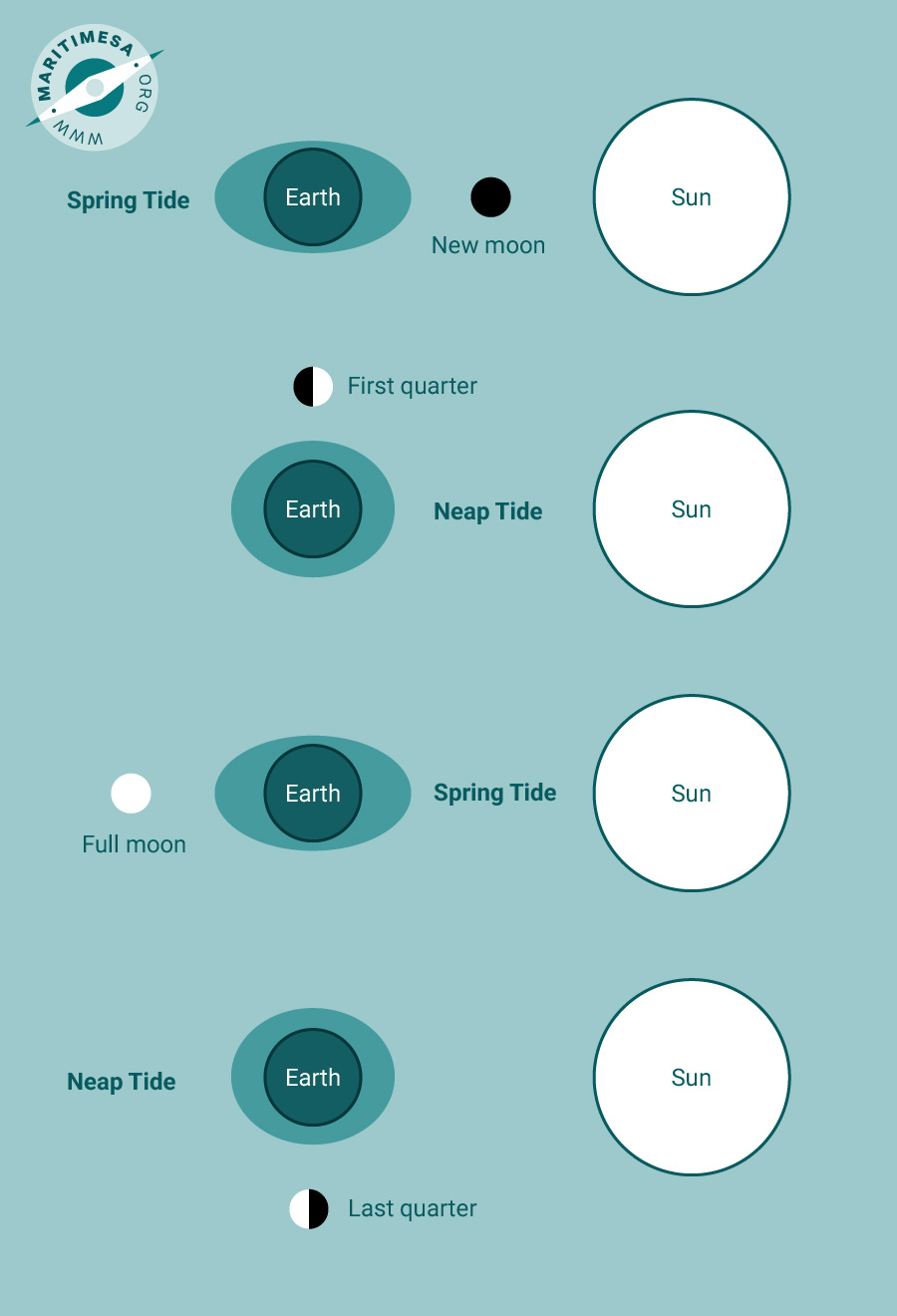[vc_row][vc_column][vc_video link=”https://vimeo.com/506148781″][vc_column_text]Tides can be defined as the periodic rise and fall of the level of the sea caused by the combined solar and lunar gravitational forces acting on the earth. There are generally two high waters and two low waters occurring at any place during a period of 24 hours and 50 minutes. This strange period is the result of the earth rotating about its axis while at the same time the moon is orbiting the earth.
Since the moon orbits the earth once a month, its position relative to the earth and sun changes and this changes the interaction between the gravitational forces acting on the earth’s surface. As a result the heights of high water and the heights of low water are not constant. Within the period of a month there are two “spring” tides and two “neap” tides. During spring tides, the height of high water is higher than normal and low water is lower than normal. In other words the range of tide is greatest during spring tide. In the case of neap tide, the range is least. In other words, there is not so great a difference between the heights of low and high water. What causes this?
When the sun and the moon are situated on the same side of the earth (at new moon) and when the sun and moon are situated on opposite sides of the earth (at full moon), the gravitational forces of the two bodies work in tandem with each other and the influence on the earth’s surface is greatest. This results in the phenomenon known as spring high and spring low. The sun and moon are then in a state of conjunction. When the sun and moon are situated at 90° to each other as seen from the earth (first quarter and last quarter), the gravitational forces act in two different directions. This results in the phenomenon known as neap tides, where the difference between high and low water is minimised. The sun and moon is then in a state of quadrature. Neap tides occur approximately 7½ days after spring tide.
The following sketch shows the relationship between the tides and the gravitational pull of the sun and moon with the latter in positions relative to the earth and sun.


